|
Ojai Valley Museum Reflects Revolution in Art Glass
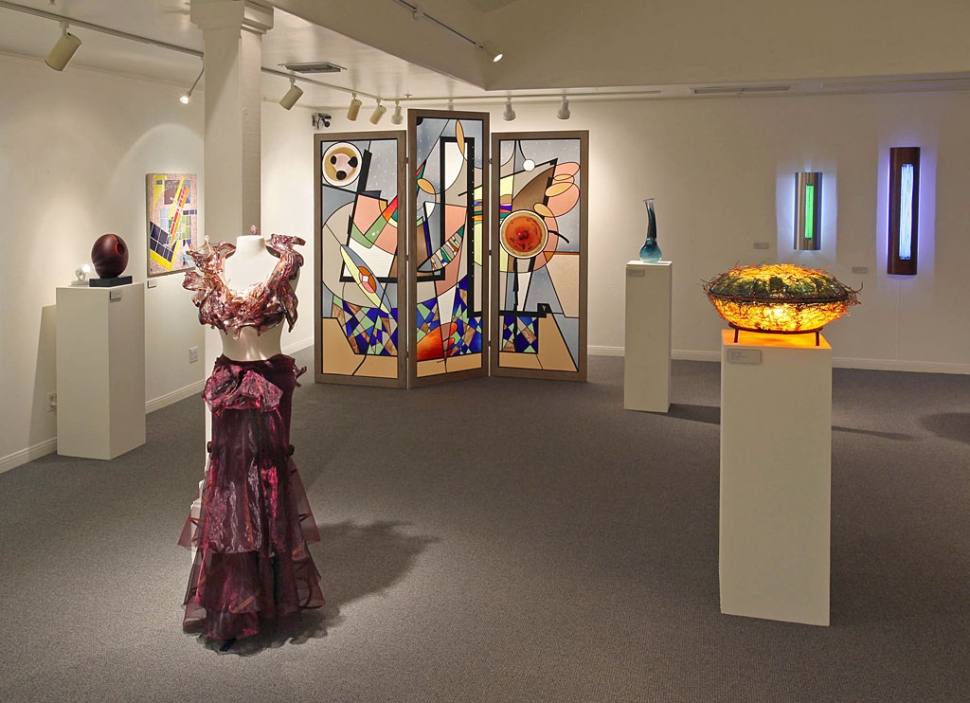 "American Glass Works” exhibit at the Ojai Valley Museum, Photograph by Roger Conrad. By Letitia Grimes — Wednesday, February 22nd, 2012
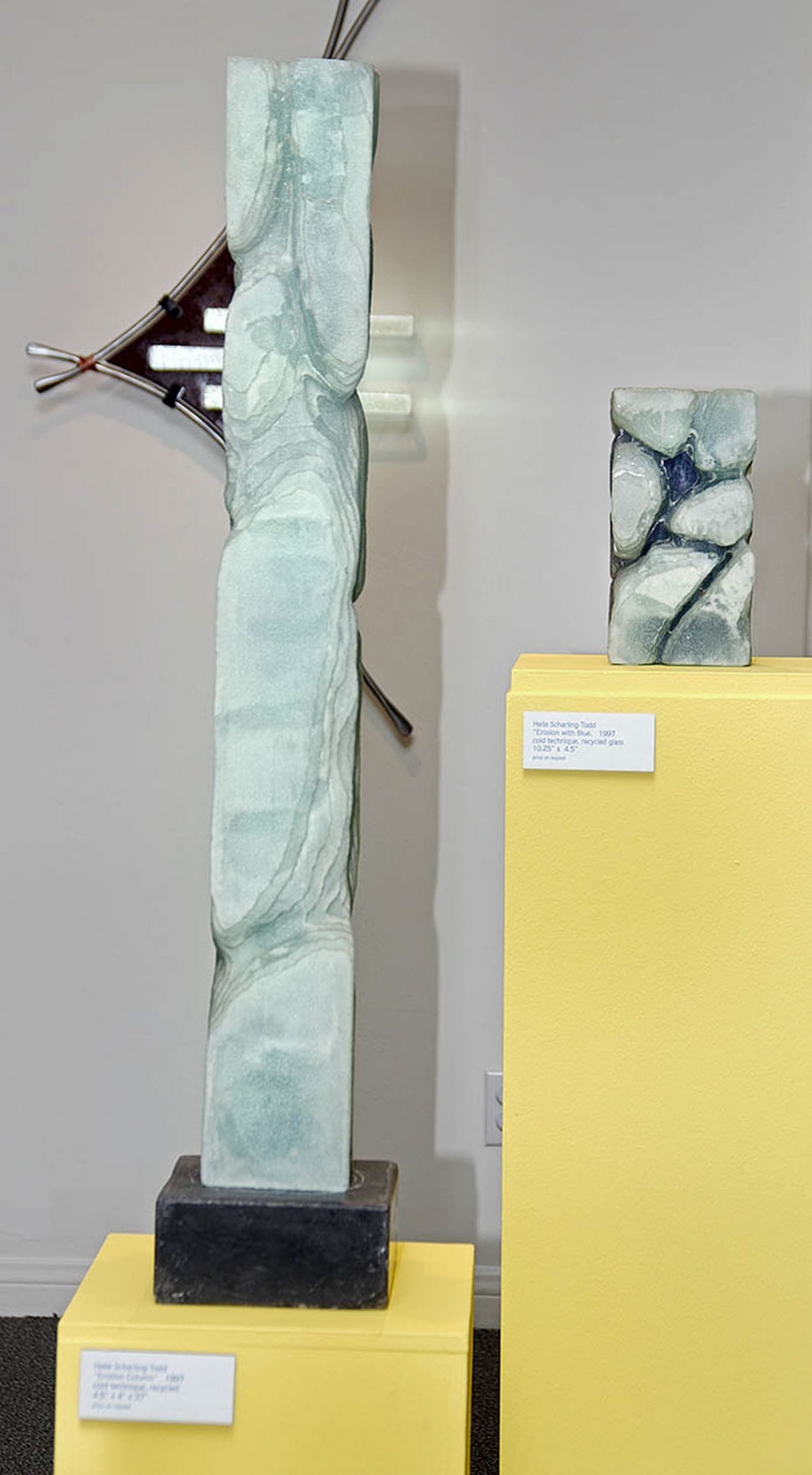 "Erosion" by Artist, Helle Scharling-Todd, Photograph by Les Dublin. 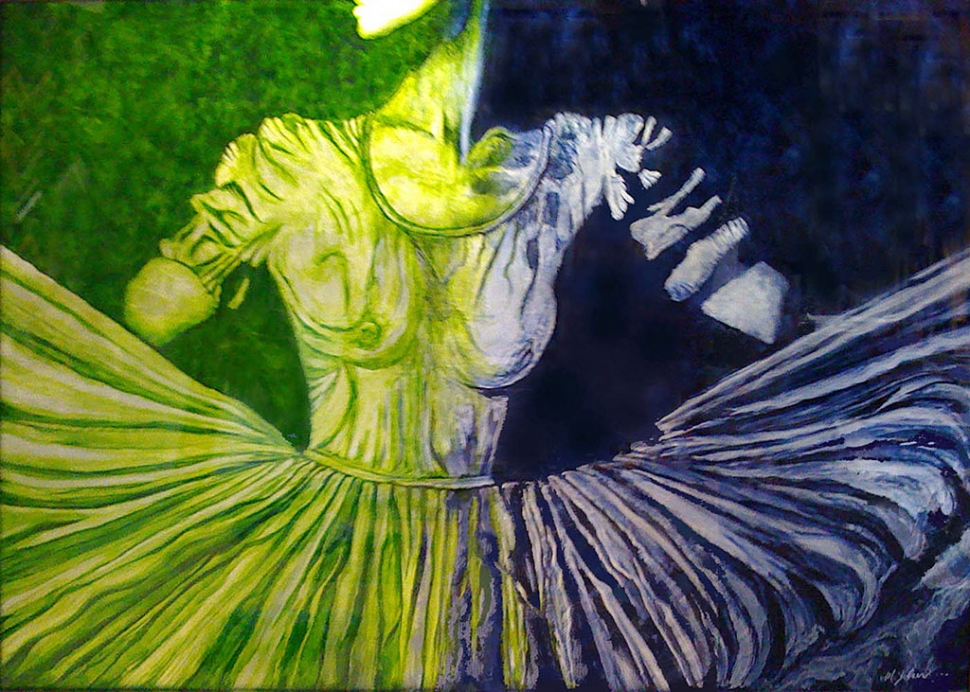 “Bolero” by Artist, Michael Zelcer, Photograph by Les Dublin. 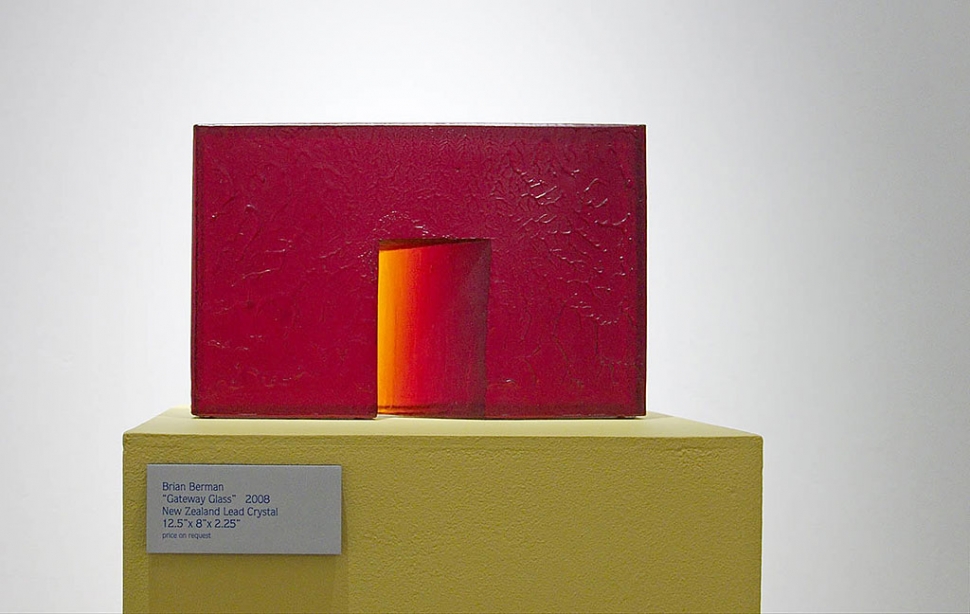 “Gateway Glass” by Artist, Brian Berman, Photograph by Les Dublin. 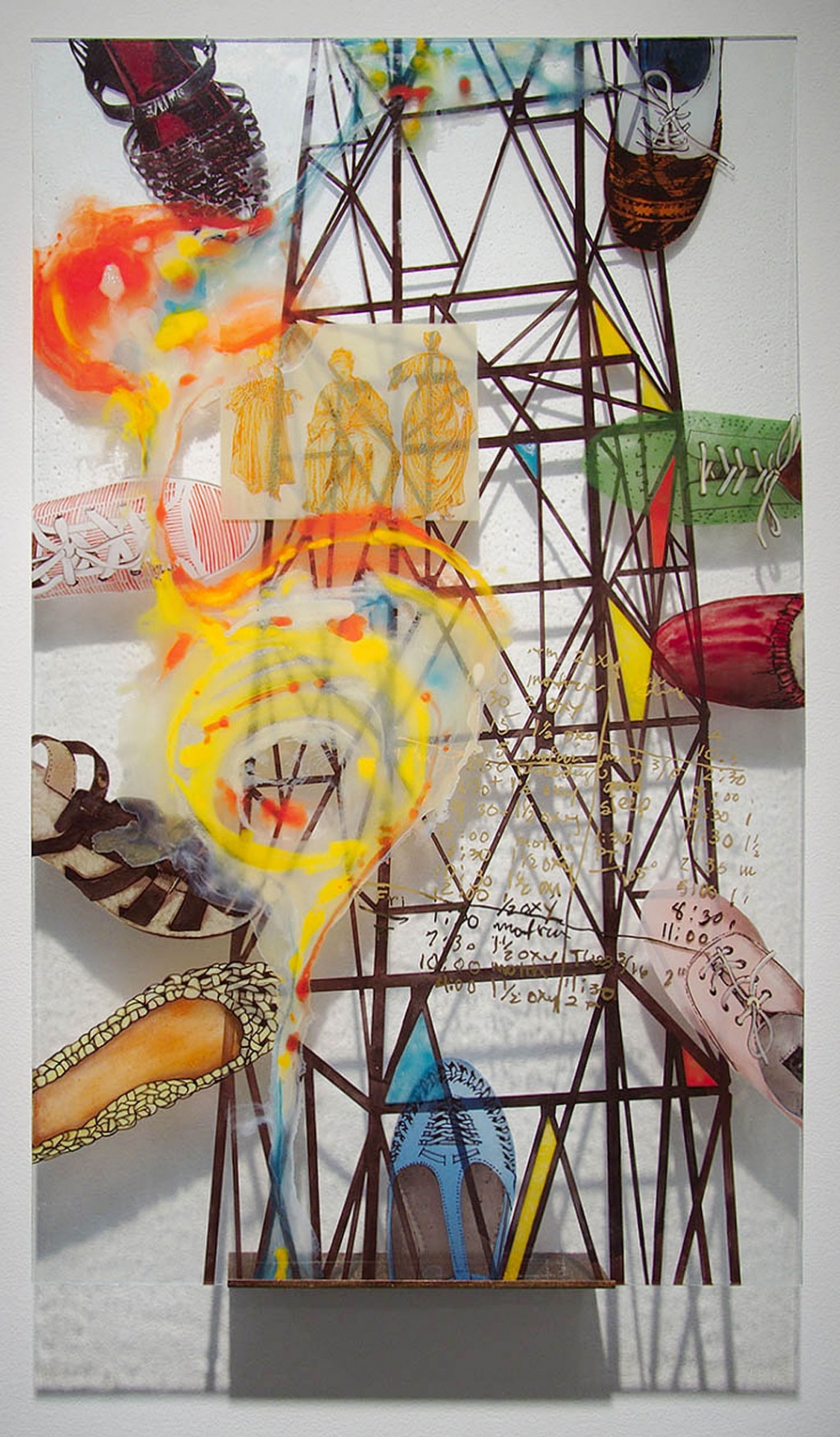 “Fluid And Dynamic" by Artist, Susan Stinsmuehlen-Amend, Photograph by Les Dublin. 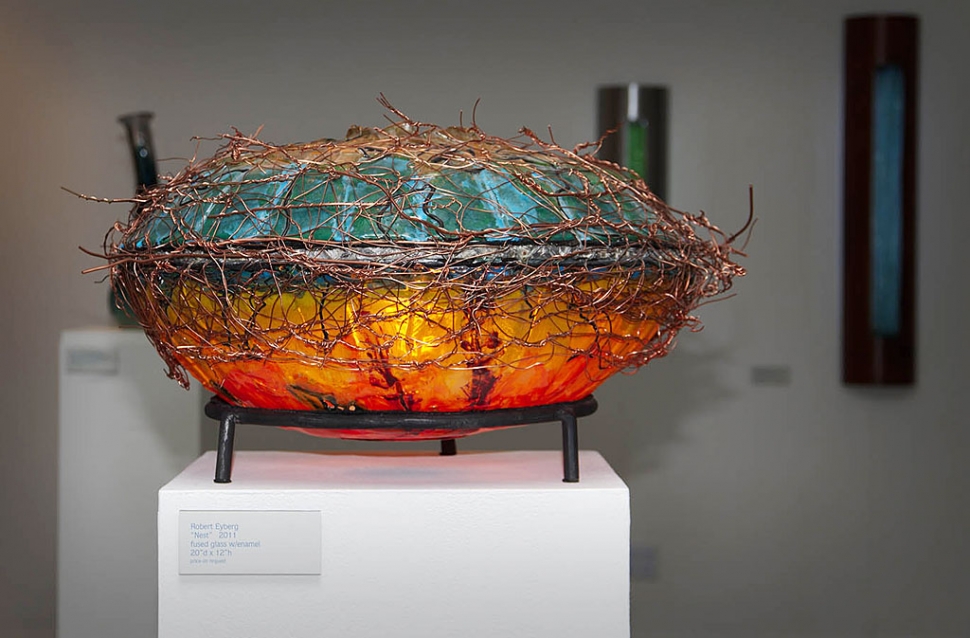 "Nest” by Artist, Robert Eyeberg, Photograph by Les Dublin. 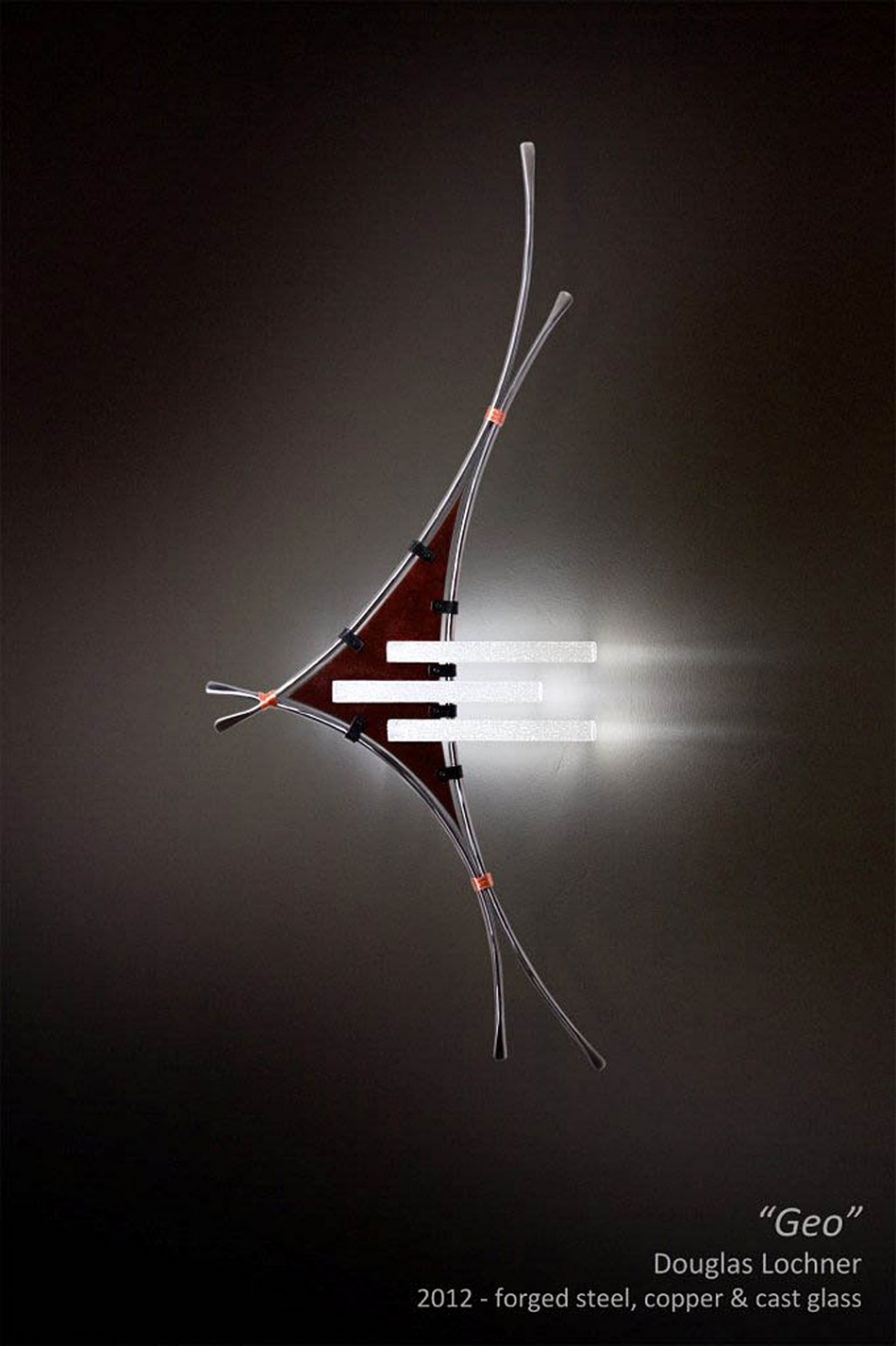 “Geo” by Artist, Douglas Lochner, Photograph by Douglas Lochner. 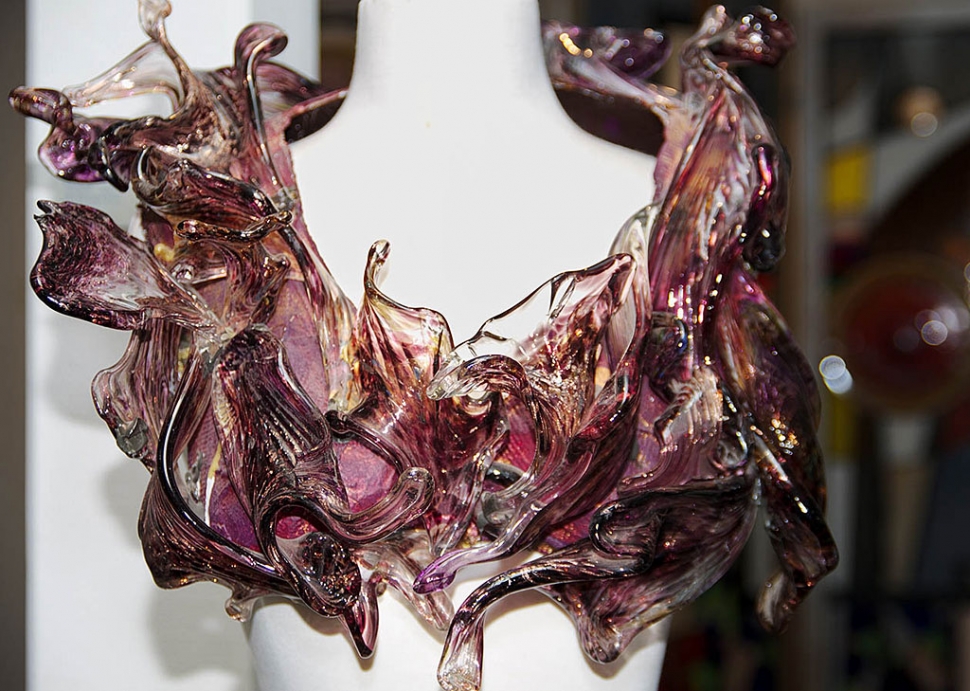 "Wearable Art Detail" by Artist, Teal Rowe, Photograph by Les Dublin. What does the Ojai Valley Museum have in common with over 120 museums nationwide? They are all celebrating the 50th anniversary of the American Studio Art Glass Movement in 2012; galleries all over the country are full of light and color reflected, refracted, fused and sculpted in glass by inspired and daring artists. Glassmaking has been around for thousands of years. In 19th and 20th century America glass was produced in a factory setting with large furnaces, manned by teams of workers. However, in 1962, in a workshop held at the Toledo Museum of Art in Ohio, a small glass furnace compatible with the individual art studio was developed. One of the innovators at this workshop, Harvey Littleton, went on to teach pioneering glass artists, among them Dale Chihuly, who founded the Pilchuck Glass School near Seattle. It is this school that has nurtured the revolutionary vision of glass artists today. Several of the artists exhibiting in “American Glass Works” have spent time at Pilchuck and worked extensively in Washington State. The beauty and mystery of glass is part of the heritage of Ojai, because of an east coast business mogul, Edward D. Libbey. Industrialist Libbey rebuilt Ojai in the early 20th century with money he made as the owner of the Libbey Glass manufacturing company in Toledo, Ohio. In his role of philanthropist, he also founded the Toledo Museum of Art, where the studio art glass movement later began. The current exhibit at the Ojai Valley Museum pulls together traditional manufactured glass from the museum's Libbey collection and the radically manipulated glass created by local contemporary artists. It is easy to imagine that Libbey, who was always a visionary thinker, would have been proud to see the progress in the art of glass on view in his beloved Ojai. The exhibit opened on January 21st with a gala catered reception. The gathering of nearly one hundred people included artists from all over the county, collectors, art patrons and art professionals. There has been an increase in visitors to the museum, and the exhibit continues to draw enthusiastic comments. There are over thirty original glass art works in the exhibit, and each artist's relationship with the fluid and often-difficult medium is a unique story. Brian Berman did not originally intend to become a sculptor, but when a serious business reversal turned his life upside down, he began working with stone sculpture as therapy. Soon he discovered that, buried like a sculpture within a block of stone, an artist was being born. As his art matured, it increasingly reflected his transformation from conflict to inner wholeness. After 9/11, he saw that this evolution in his sculpture could be used in working for peace in the world. Searching for a way to bring the dimension of light into his work, he traveled to the Czech Republic to study glass casting. Czech artists had developed beautiful optical effects as well as geometric forms inside the glass. In Berman's work, light filling the spaces within the form evokes in the viewer a sense of the peace and grace that follows the resolution of conflict. Although Robert Eyberg of Ventura is best known for his mastery of stained glass, his most creative new work is represented by the avant-garde pieces in the exhibit. "The Nest" floats in the center of the gallery, and its flame-colored glow seems to hold together the surrounding art, standing like friends warming themselves around a fire. Eyberg pays close attention to his dreams and inner consciousness, and the idea for this piece came to him when he saw a bird's nest in a fellow artist's studio. Inspired to move away from the more masculine, hard-edged forms to open, feminine vessels, he began weaving together glass and wire in an organic way. A similar process is seen in his two "Medicine Bags." It was the form that came first into his consciousness, then later he realized that it was like a medicine bag that Native American shamans wear. Again using otherwise harsh materials like wire and rebar, the form emerged as a container for the spirit, with a central heart. Until five years ago, Douglas Lochner was the CEO of two highly successful technology companies, and practiced metal sculpture only as a hobby in his spare time. But he reached a turning point in his life, when it became clear to him that he couldn't be a sculptor in the field that attracted him most - public art - and also run his companies. So he took a step unimaginable to most of us, sold his businesses and now devotes himself to sculpture. His daring and sense of seizing the moment makes his artwork highly dynamic. Whether spinning a semi-molten bowl like a glass pizza, or patiently compiling daily notes of his constant experiments, Lochner brings into his art the energy and technical discipline that built his company. His focus on capturing, and then sharing a moment in time, can be seen vividly in his piece, "Azurite": a round, kiln-fused disc is both abstract concept and glass in motion. In the center, a copper inclusion has become translucent in the volcanic temperature. Teal Rowe attended the Pilchuck Glass School and studied with masters of glass working from Italy. But even the Italians never thought to transform glass sculpture into dresses of wearable fine art. Rowe has sculpted hot glass into clusters of color resembling a sunset in Venice: amethyst, rose, aquamarine and gold encircle the neckline. By the time of the gala, both dresses had been sold. In her exhibit triptych, "Old Irish Limerick," Rowe sculpts heavy chunks of hot, solid core glass into clear, light-filled hands that express the flow of life through the heart. Fused into the sculpture is her memory of a beloved uncle, who taught her as a teenager how to work with her own hands. Helle Scharling-Todd is a master of the art of mosaic. A native of Denmark, she came to live in Ventura when she married an American biologist. Scharling-Todd works primarily in public art and most of her mosaic installations are found in Europe, but in Ventura County they can be seen at the Avenue Senior Center and the Port Hueneme Library. Influenced by the Bauhaus school of Germany, her art de-clutters forms left over from the past, leaving pure color and shapes full of life. Her unique sandblasted sculptures begin with blocks of ordinary recycled glass. As the artist slowly carves layer after layer into the form, she acts like a natural force to erode a sinuous column. When the viewer moves around the sculpture, light cascades through the layers. Susan Stinsmuehlen-Amend has been working in glass for over thirty years, and her works are in major museums, including the Los Angeles County Museum of Art, the Museum of Arts and Design in New York, and the Detroit Institute of Arts. She was Artist in Residence at the Pilchuck Glass School in 2006 and will be there in May of this year as a Hauberg Fellow. Her work shows the evolution of glass from utility to fine art, as she deliberately deconstructs or embellishes traditional glass vessels. This is particularly well illustrated in the exhibit by the Curator’s placement of her "Vocabware" series in the same exhibit cases with Libbey glass hostess sets from the 1950's. Stinsmuehlen-Amend uses the transparency of clear glass as a metaphor for consciousness, and a stream of images migrate through different genres. In her stained glass folding screen, "Pro Rata Lyricism," she takes a form used in elegant Art Nouveau decor and shatters it into jagged bolts of primary colors punctuated by blown glass roundels. Michael Zelcer has become, almost by accident, a master of a cold-working art in glass, reverse painting. Although drawn to be a painter in his youth, he made the decision to pursue a more practical career as an architectural designer because of his desire to support a family. Twelve years ago he began experimenting with reverse painting on glass and was soon creating one painting after another, inventing his own techniques as he went along. It wasn't until later in this process that he actually identified the history of what he was doing; he was creating paintings unencumbered by knowledge of a glass tradition known as églomisé. This is a difficult and exacting art, very unforgiving of mistakes, with everything done on the reverse of a pane of clear glass. Zelcer uses recycled glass from old storefronts in Ventura and Santa Barbara. His work explores the depths behind appearances: the form of a dancer dissolves into layers of light, and dream-like abstractions move from background in one painting to foreground in another. The Ojai Valley Museum, established in 1967, is generously supported in part by Museum Members, Private Donors, Business Sponsors and Underwriters, the Smith-Hobson Foundation, Wood-Claeyssens Foundation, City of Ojai, and the Rotary Club of Ojai. "American Glass Works" will be open through April 1, 2012. The Ojai Valley Museum is located at 130 W. Ojai Avenue, Ojai, CA. Admission: free for current 2012 members, adults - $4.00, students and children 6 to18 - $1.00, children 5 and under - free. Gallery hours are Tuesday - Saturday 10 a.m. to 4 pm; Sunday, noon to 4 pm. Tours are available by appointment. For more information, call the museum at (805) 640-1390, extension 203, or visit the museum website at http://www.ojaivalleymuseum.org/ |
